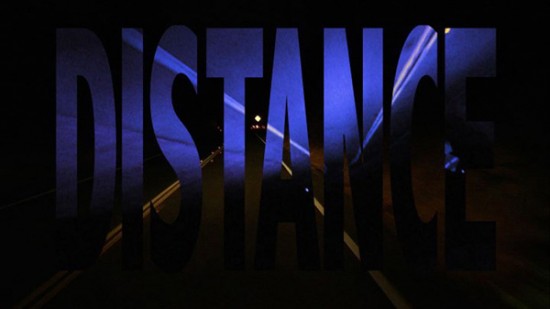Asymmetrical Cinema is a fitting title for the cacophony of noise and image currently on show at Beaconsfield Gallery. Housed in the gallery’s dimly lit Arch Space, the exhibition brings together two very different films to create a kind of cultural purgatory. Stuck between dystopic images of Los Angeles in Sanity Assassin (Amanda Beech, 2010) and the violent streets of Troubles-era Belfast in Elephant (Alan Clarke, 1989) I felt immobilised and claustrophobic – an impressive feat in a huge, post-industrial gallery space.
Curated by Dale Holmes and Kirsten Cooke under the moniker Material Conjectures, the first “act” of Beaconsfield’s new exhibition is a highly visceral experience. Asymmetrical Cinema probes the physical and psychological impact of mass media, film and television, encouraging a more bodily form of spectatorship. Here, films are screened onto sculptural objects, while the lack of seating suggests this is not a place for relaxation.

Entering the exhibition, viewers are first confronted with the bleak landscapes and unexplained violence of Elephant. In this iconic film set in Northern Ireland, we witness 18 sectarian shootings over 39 minutes, and a mere three lines of dialogue. As Clarke’s pared-back film plays on one screen, Beech’s film plays on another. Contrasting starkly with Elephant, Sanity Assassin is a dizzying kaleidoscope of image, text and noise. Recalling moments from American horror movies, it blends shots of creepy suburban houses with high-speed images of empty motorway, charged with an unfulfilled sense of suspense.
Tucked behind a huge wall of black, Sanity Assassin pulsates with abstract sound, somehow dragging the viewer away from shocking assassination scenes in Belfast. The two films compete with each other, fighting for your attention, grabbing at your senses.

While you can’t watch both films at the same time, their sound bleeds into one another, mixing drone-like noise with the unsettling sound of gunshots. The set-up encourages viewers to move between both screenings, but ultimately by showing two films at once, contemplation becomes impossible. As a result, Asymmetrical Cinema becomes more about the act of viewing than the content of the films themselves.
Much like Steve McQueen’s Hunger (2012), Elephant is a film that commands our full attention. As one reviewer puts it: “Elephant is not a film of separate sequences but the absolute sum of its parts – it has to be seen as a complete work, in one uninterrupted sitting”. Ultimately then, by screening a film like this alongside a more fragmented work like Sanity Assassin, the exhibition critiques what it means to be a spectator – but this only became clear after I’d left the exhibition.
Asymmetrical Cinema was so absorbing – the sound deafeningly loud, the violence so unsettling – that it immersed me completely. Drawing attention to the practice of spectatorship, the exhibition shows us how images can immobilise us, make us inert. In contrast to traditional cinema, Asymmetrical Cinema is a confrontational experience that encourages us to become more active spectators. It’s not an experience I’d want to repeat, but it certainly etched itself onto my nervous system. Worth a visit, but not one for the faint-hearted.
Exhibition: Asymmetrical Cinema
Curators: Material Conjectures (Dale Holmes and Kirsten Cooke)
Artists/filmmakers: Amanda Beech and Alan Clarke
Details: Beaconsfield Gallery, Vauxhall, London, 15 May-8 June 2013
First published: Aesthetica magazine blog, 6 June 2013. View the published article on Aesthetica here
